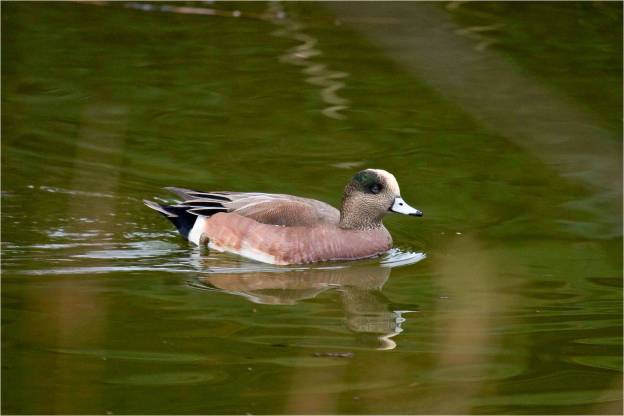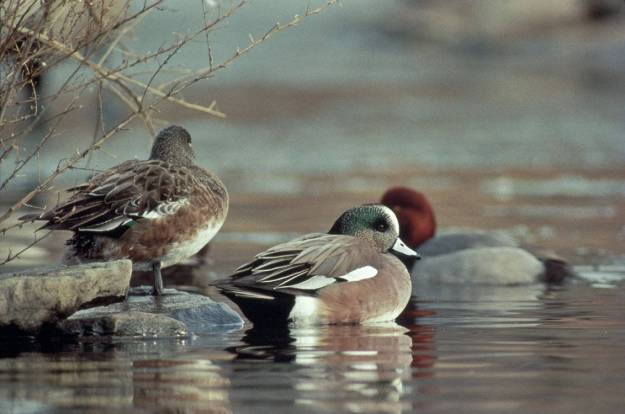
Photo by Tim McCabe/U.S. Fish & Wildlife Service • This male American wigeon shows the white head patch that gives this duck its other common name of “baldpate.” In this photograph, a female wigeon rests near her mate while a male redhead, a species of diving duck, swims in the background. This duck nests in season wetlands in the American midwest.
Erwin, Tennessee, resident Pattie Rowland recently asked my help identifying some ducks she had photographed at the pond at Erwin Fishery Park. She already suspected the ducks in her photo were American wigeons, but she wanted confirmation.
The ducks were indeed wigeons, which are classified with the “dabblers” instead of the “divers,” which are two broad categories for describing the wild ducks likely to occur throughout North America. Dabblers feed mostly near the surface of the water, foraging on everything for aquatic insects to roots and tubers. The “divers,” not surprisingly, dive into the depth to pursue fish, mollusks and other aquatic prey.
“This was my first time to see them,” Pattie noted in a Facebook message. I congratulated her because I know how exciting a new observation of a bird can be.
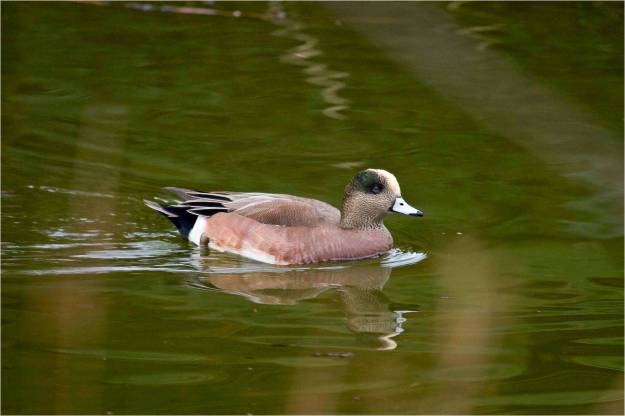
Photo by Roy Lowe/U.S. Fish & Wildlife Service • A male American wigeon looks quite at home swimming on a small pond. Wigeons belong to ducks that are classified as “dabblers” and “puddle ducks.”
It’s not been an exciting winter for ducks in the region. Other than some redheads and buffleheads back in November and early December at the start of the winter, the wigeons are the only wild ducks of interest that I’ve observed at the pond.
The U.S. Fish and Wildlife Service released its report this past summer on 2018 Trends in Duck Breeding Populations, based on surveys conducted in May and early June of 2018 by FWS and Canadian Wildlife Service.
Overall duck numbers in the survey area remained high, according to the report. Total populations were estimated at 41.2 million breeding ducks in the traditional survey area, 13 percent lower than last year’s estimate of 47.3 million but 17 percent above the long-term average. The projected mallard fall flight index was estimated at 11.4 million birds, down from the 2017 estimate of 12.9 million.
“The dip in the population for prairie-breeding puddle ducks is not unexpected and by no means unprecedented given that conditions on the prairies this spring were drier than last year,” said DU Chief Scientist Tom Moorman. “As a result, 2018 populations dropped accordingly. However, populations of all key species except northern pintails and scaup remain above long-term averages. This year’s breeding population decline is a reminder of the need to sustain the capacity of breeding habitats, particularly in the prairies as we go through natural variation in wetland conditions. Waterfowl populations are adapted well to short-term swings in habitat conditions, but we must continue to guard against the long-term loss of prairie breeding habitat.”
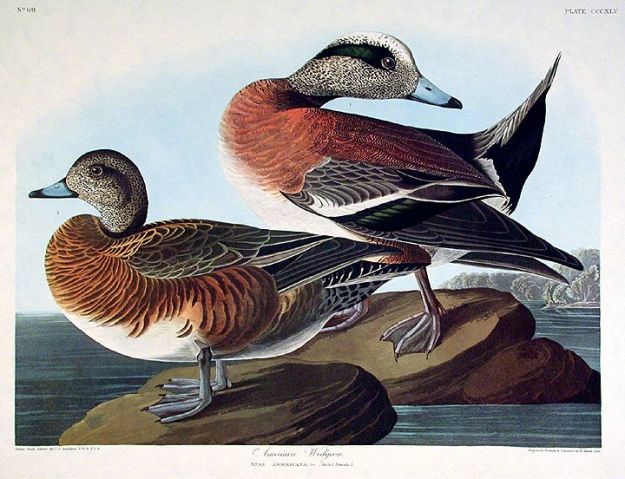
Early naturalist and artist John James Audubon painted this pair of American wigeon, a duck for which the male has earned the name “baldpate” for a distinctive white crown patch.
American wigeons, however, bucked the trend of some of the other prairie-breeding puddle ducks and showed a slight rise in overall numbers. The wigeon breeding population was estimated at 2.8 individual ducks, according to the survey. Wigeons beat their long-term average, which rests at 2.6 million.
The American wigeon can be found all over North America. Their breeding grounds stretch from Alaska across the tundras of Canada all the way to the Atlantic Ocean. American Wigeons can be found in their wintering habitats from the American Northwest to central Mexico, from the southern prairie pothole region through the Gulf Coast and from New York to the Bahamas close to the Atlantic shoreline. American wigeons are also common winter visitors to Central America, the Caribbean, northern Colombia, Trinidad and occasionally Venezuela
Wigeons are aquatic grazers and forage on grasses and sedges in wet meadows and pastures. The American wigeon’s diet has a higher proportion of plant matter than the diet of any other dabbling duck.
It’s also called the “baldpate” for the same reason our national bird is known as the “bald” eagle. A white patch on the forehead reminded early naturalists of a bald man’s head in much the same way that our national bird earned the term “bald” eagle because of its own white head. Further, the word “bald” is thought to derive from an archaic word in Middle English meaning “white patch,” from which the archaic definition “marked or steaked with white” is drawn.
The origins of the term “wigeon” are a bit murkier. According to Merriam-Webster Dictionary, the first known use of “wigeon” dates back to 1508, and other sources suggest that the term perhaps was derived from a French/Balearic term meaning “a kind of small crane.”
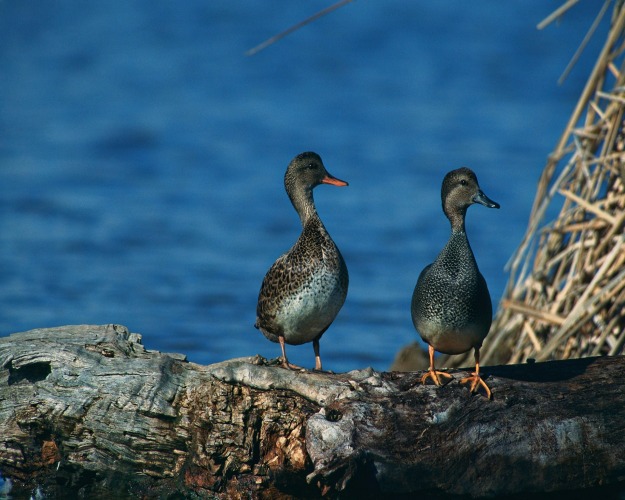
Photo by Coffee/Pixabay.com • Gadwalls are close relatives of American wigeon.
There are two other species of wigeons — the Eurasian wigeon of Asia and Europe and the Chiloé wigeon of South America. Wigeons belong to the Mareca genus of dabbling ducks, which also includes gadwall and falcated teal.
While female American wigeons produce a rather raspy quacking sound, wigeons more typically produce a vocalization when excited that sounds like “whew, whew, whew.”
Some ducks have become associated with certain bodies of water in the region, and the American wigeon is no exception. In addition to the pond at Erwin Fishery Park, there have been reports of American wigeons this winter from a large pond adjacent to the campus of Northeast State Community College in Elizabethton, Tennessee, as well as on the weir dam at Osceola Island Recreation Site in Bristol. Hooded mergansers have wintered in large numbers at Middlebrook Lake in Bristol. Hundreds of buffleheads have wintered at Wilbur Lake near Elizabethton, Tennessee, for decades. March and April, being periods of transition as winter changes into spring, could bring migrating ducks to the region’s ponds, lakes and rivers. Keep your eyes open and you could be surprised by what you find.

